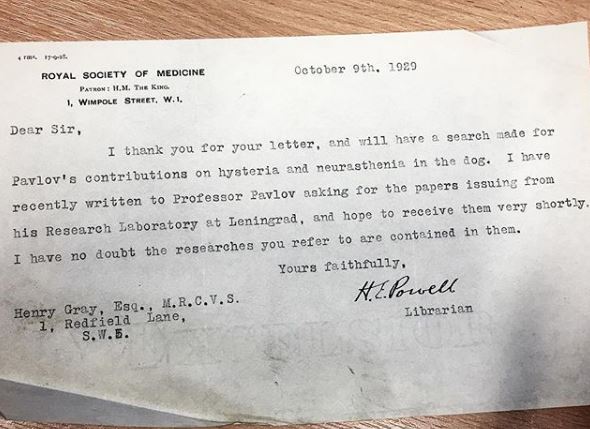A Few Of My Favourite Things
I thought before I leave my role here, and go off to study for my MA in Archives and Records Management, it would be a nice idea to share snippets of my favourite finds and favourite materials that I’ve had the pleasure of working with during my time with RCVS Knowledge’s historical collections.
For those of you who also follow us on social media you might be aware of some of the fun we’ve had using hashtags whilst photographing our daily finds and tasks.
I have enjoyed never having to beat the Monday blues whilst I’ve been working here. In fact Mondays have been every colour imaginable and I’ve been celebrating that with #marbledmondays on our Instagram account

Highlights of our #marbledmondays photographs on Instagram
It didn’t stop with Mondays – #tinytuesdays, #waybackwednesdays, #throwbackthursdays and #finebindingfridays, have all allowed me to engage with our library and archive collections in new ways, and of course, to show them off!

More photographs showing off our collections!
I have also adventured to far-flung lands alongside fascinating people, such as Captain Richard Crawshay, who authored the book The Birds of Tierra del Fuego (published in 1907). His letters are now transcribed and can be viewed via our Digital Collections website here.

Page from letter to Frederick Smith from Richard Crawshay, Useless Bay [Inutil Bay], Tierra del Fuego, [Chile], 29 Jan 1905 [FS/3/3/3/1]
This is one of my favourite quotes from Crawshay’s letters (pictured above):
“The most sensational birds I have – to me at least are a tiny Reed Warbler no larger than a Bumble Bee, a tiny black wren from the depths of the forest at the entrance of Admiralty Sound, a tiny tiny owl from the forest weighing exactly 3 oz, probably the largest bird of prey in the island – an Eagle measuring 5ft 91/2 inches from wing tip to wing tip…”
One of my favourite people to get to know was Henry Gray, an early 20th century veterinary surgeon. I am cataloguing his papers and have learnt so much through the words of his correspondents. Henry Gray’s papers have given me a great insight into the plight of the veterinary professional in the 1900’s. Through Gray and his peers I have learnt about the veterinary surgeon’s tremendous work ethic and their incredible anatomical, clinical, pathological and physiological knowledge. One of the most interesting letters I found in Gray’s papers was one where he had a response from a librarian from the Royal Society of Medicine after requesting Ivan Pavlov’s research into canine hysteria and neurasthenia. It put Gray’s life into a greater context for me – imagine being able to reach out to Pavlov himself for your own research?

Letter to Henry Gray from H E Powell, Librarian, Royal Society of Medicine, 9 Oct 1929
The most recent exciting discovery was a batch of finely detailed 19th century artworks which the archivist found tucked away in a cupboard. The pieces have now been carefully restored and we have an online shop where you can pick up a select few as prints! (You can visit the shop here: shop.rcvsvethistory.org) I enjoyed getting to digitise these amazing paintings and drawings, even though the art is as equally beautiful as it is grisly! Ovet the next few months, we are going to be asking our Instagram and Twitter audience to help us identify the parts of the anatomy we can’t, so stay tuned for that! There are many other amazing artists in our collection and it was interesting for me to find out that some of them had actually practiced as veterinary surgeons too, such as Edward Mayhew and John Roalfe Cox.

Anatomical artwork by Joseph Perry, January 1835. From the Field Collection.

A page from John Roalfe Cox’s sketchbook
Thank you to everyone who has been following along with us. I have had so many great experiences in my time working for RCVS Knowledge. I’ve been here over a year and there is still so much more to discover. I’m so glad to have had a hand in sharing the important historical value of such an amazing profession.
-Helena-





























